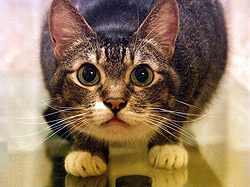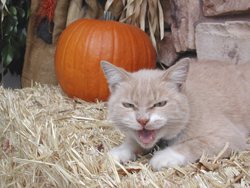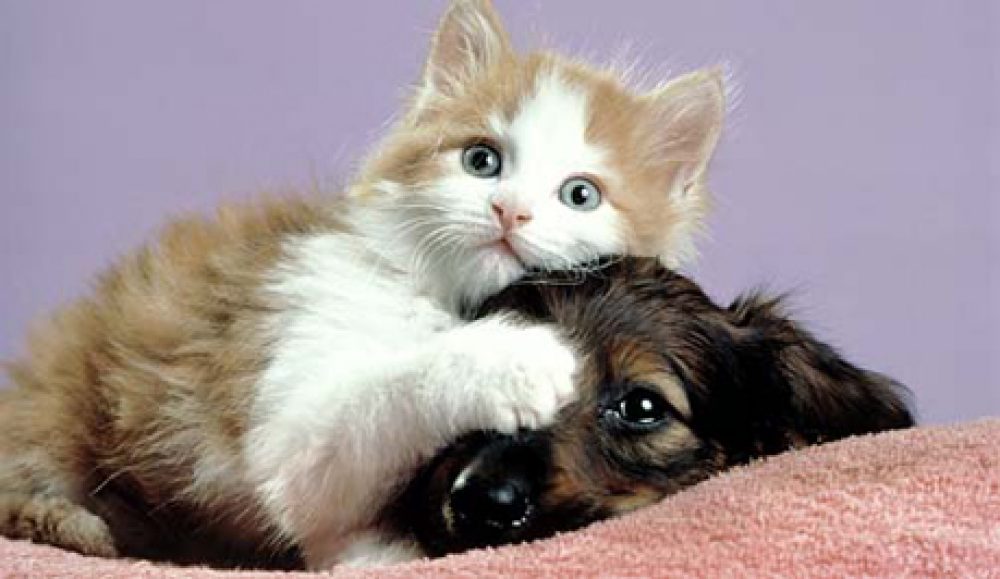Pet owners can’t figure out why cats are friendly one minute and aggressive the next. Cat bites are very common and probably occur more frequently than dog bites; however, they are infrequently reported. Aggressive cats can be dangerous, so attempting to resolve a cat aggression problem often requires a specialist who is trained in animal behavior medicine.
There are several types of feline aggression. The list below includes some of the most common forms.
Aggression With Petting
This behavior isn’t well understood, even by experienced animal behaviorists. Some cats will suddenly bite while they’re being petted or held. For whatever reason, petting, which the cat was previously enjoying, apparently becomes unpleasant. Biting is the cat’s signal that she has had enough. Cats vary in how much they’ll tolerate being petted or held. Although people often describe their cats as biting “out of the blue” or without warning, cats do generally give several signals before biting.

You should become more aware of your cat’s body postures, and cease petting or stop any other kind of interaction before a bite occurs. Signals to be aware of include:
- The cat becomes restless
- The tail begins to twitch
- The cat’s ears turn back or flick back and forth
- The cats head starts moving toward your hand
When any of these signals become apparent, it is time to stop the petting or holding the cat. The best thing to do is put the cat down and stop petting her. Absolutely do not impose any physical punishment on the cat as she or he may bite. Physical punishment may make it worse the next time you try to pet her or pick her up.
If you want to try to prolong the amount of time your cat will tolerate petting, use a food reward. When your cat first begins to show an undesirable behavior (or even before), offer her a favorite tidbit of food. As you give her the food, decrease the intensity of your petting. In this way, she’ll come to associate petting with something pleasant and may help her to enjoy petting for longer periods of time. Each time you work with your cat, try to pet her a little longer. Be sure to stop petting before she shows any aggression.
Play Aggression
Play aggressive behavior is usually observed in young cats who live in single-cat households. These cats are very active and generally less than two years old. This behavior provides kittens and cats the opportunity to practice the skills they would normally need to have in order to survive in the wild. Play incorporates a variety of behaviors, such as exploratory (explore new areas), investigative (investigate anything that moves) and predatory (bat at, pounce on, and bite objects that resemble prey) behaviors.

Playful aggression often occurs when an unsuspecting owner comes down the stairs, rounds a corner, or even moves under the bedcovers while sleeping. These playful attacks may result in scratches and bites which usually don’t break the skin. People sometimes inadvertently initiate aggressive behavior by encouraging their cat to chase or bite at their hands and feet during play. The body postures seen during play aggression resemble the postures a cat would normally show when searching for or catching prey. A cat may freeze in a low crouch before pouncing, twitch her tail, flick her ears back and forth, and/or wrap her front feet around a person’s hands or feet while biting. These are all normal cat behaviors, whether they’re seen during play or are part of an actual predatory sequence. Most play aggression can be successfully redirected to appropriate targets; however, it may still result in injury.
In order to correct this behavior, you need to redirect your kitten’s aggressive behavior onto acceptable objects. Drag a toy along the floor to encourage your kitten to pounce on it, or throw a toy away from your kitten to give her even more exercise by chasing the toy down. Another good toy is one that your kitten can wrestle with, like a soft stuffed toy that’s about the size of your kitten. She can grab this toy with both front feet, bite it, and kick it with her back feet. This resembles the way young kittens play with each other. Encourage play with a “wrestling toy” by rubbing it against your kitten’s belly when she wants to play rough. Be careful and get your hand out of the way as soon as she accepts the toy.
Since kittens need quite a bit of playtime, try to set up three or four consistent times during the day to play with your kitten. This will help her understand that she doesn’t have to be the one to initiate play by pouncing on you.
Fearful/Defensive Aggression
Cats that are fearful may display body postures which appear to be similar to canine submissive postures
